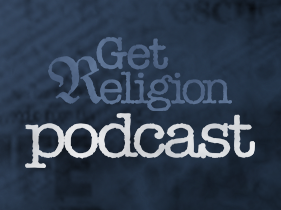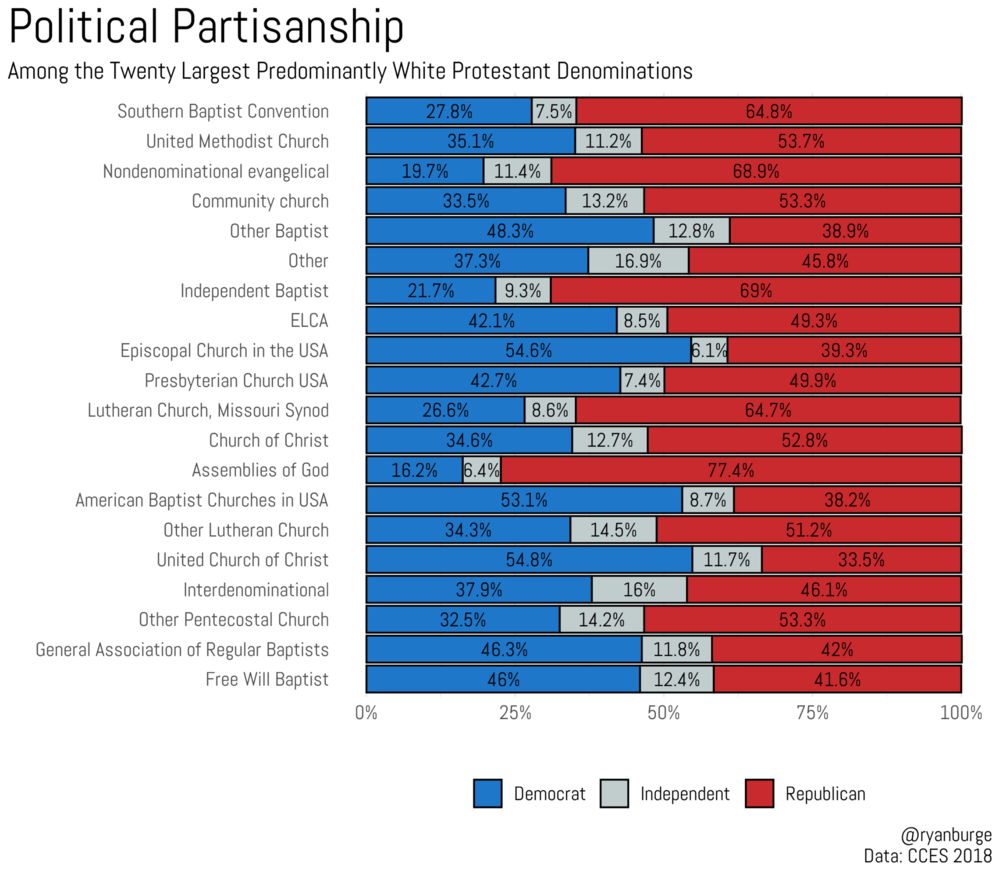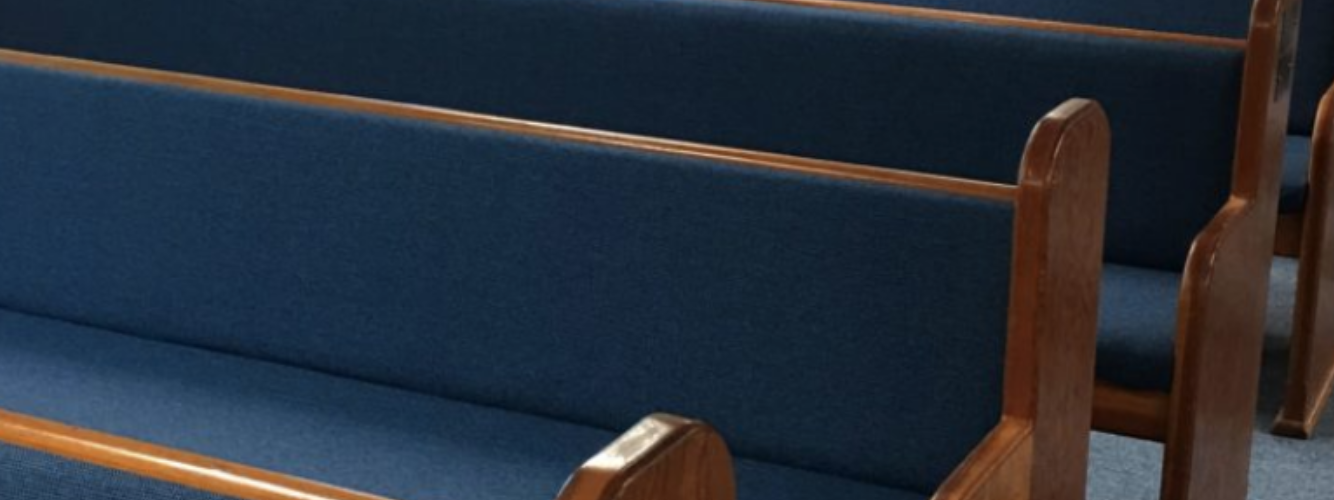
It’s deja vu time, all over again. Again and again.
This week’s “Crossroads” podcast (click here to tune that in) felt like one long time-travel ride in the WABAC machine (think “Rocky and Bullwinkle”) or Doctor Who’s TARDIS.
Let’s start at the beginning. Way back in 2003, I read an article in The Atlantic Monthly that — more than any other — made me start thinking about creating some kind of website about how many (not all) reporters in the mainstream press struggle to see the role that religion plays in public life.
The essay was called, “Blue Movie — The ‘morality gap’ is becoming the key variable in American politics” and it was written by Thomas B. Edsall, a former Washington Post political reporter who had moved to the faculty of the Columbia University journalism school.

Although I have used it’s opening paragraphs many times, here they are again:
Early in the 1996 election campaign Dick Morris and Mark Penn, two of Bill Clinton’s advisers, discovered a polling technique that proved to be one of the best ways of determining whether a voter was more likely to choose Clinton or Bob Dole for President. Respondents were asked five questions, four of which tested attitudes toward sex: Do you believe homosexuality is morally wrong? Do you ever personally look at pornography? Would you look down on someone who had an affair while married? Do you believe sex before marriage is morally wrong? The fifth question was whether religion was very important in the voter’s life.
Respondents who took the “liberal” stand on three of the five questions supported Clinton over Dole by a two-to-one ratio; those who took a liberal stand on four or five questions were, not surprisingly, even more likely to support Clinton. The same was true in reverse for those who took a “conservative” stand on three or more of the questions. (Someone taking the liberal position, as pollsters define it, dismisses the idea that homosexuality is morally wrong, admits to looking at pornography, doesn’t look down on a married person having an affair, regards sex before marriage as morally acceptable, and views religion as not a very important part of daily life.) According to Morris and Penn, these questions were better vote predictors—and better indicators of partisan inclination—than anything else except party affiliation or the race of the voter (black voters are overwhelmingly Democratic).
The question is obvious: Were we looking at a political divide or one based on differences rooted in religious doctrines and attempts to practice them? There was no way around the fact that there were religion ghosts all over the place in this incredible “Blue Movie” piece.
This past week — taking a break from coronavirus coverage — I wrote my “On Religion” column about former Barack Obama staffer Michael Wear and efforts to probe religious tensions inside today’s Democratic Party (click here to see that). The key: Many political reporters and other Democrats just didn’t “get” the role that African-American churchgoers and other pew-based moderates play in their party.
As I was getting ready to ship that column to the syndicate, I did my morning cruise through The New York Times and spotted this headline: “In God We Divide: The political dimensions of worship have never been greater.”
My head spun when I say the byline: Thomas B. Edsall. Here is the lede on this deja vu trip:
A steady religious realignment has reshaped the white American electorate, turning religious conviction — or its absence — into a clear signal of where voters stand in the culture wars.
Oh my, it’s the pew-gap edition of “Blue Movies 2.0,” sort of. And guess who shows up in the crucial thesis statement section of this piece? Let’s face it, GetReligion contributor Ryan Burge, who is best known for his work at the Religion in Public blog, is everywhere right now.
This is long, but essential.
The more religiously engaged a white voter is, the more likely he or she will be a Republican; the less religious the voter, the more likely to be a Democrat. But, as we shall see it’s not that simple: The deeper you go, the more complex it gets.
Ryan Burge, a political scientist at Eastern Illinois University, has tracked religious trends for the past 30 years using data from the General Social Survey. He reports that in 1988, 55.7 percent of Americans were members of traditional, mainstream denominations, 36.6 percent were members of evangelical and born-again denominations and 7.7 percent said they were not religious.
By 2018, membership in traditional denominations had fallen 20 points to 35.5 percent, born-again evangelical church membership had grown by 4.8 points to 41.4 percent, and the share of the nonreligious had tripled to 23.1 percent.
In an email, Burge warned that “in just a few years there will be no moderate Protestants left.”
This has been a windfall for the Republican Party.
As Burge writes: “Almost every predominantly white Protestant denomination — from Southern Baptists and United Methodists to Missouri Synod Lutherans and the Assemblies of God — is solidly Republican” This is apparent in the sea of red in the accompanying chart.

What about the Democrats? Here is another must-read chunk of this long, long, feature by Edsall:
Take white working class Democrats. Brian Schaffner, a political scientist at Tufts, measures the intensity of religious commitment using responses to the question in the 2018 Cooperative Congressional Election Study, “How important is religion to you, very important, somewhat important, not very important or not at all important?” …
In the 2018 midterm elections, Schaffner found that 76 percent, of those for whom religion is not at all important voted for Democratic House candidates in 2018. At the other end of the spectrum, nearly 4 out of five — 78 percent — of non-college whites who said religion was very important voted for a Republican House candidate. …
There is, Schaffner explained in an email, “a 50 point plus gap (!) between how nonreligious white working class people voted in 2018 compared to how the most religious white working class people voted.”
Schaffner’s data shows an even larger religious gap among white college graduates. This group is less religious than whites without degrees — 36 percent answered “very important,” 22 percent “somewhat important,” 15 percent “not too important” and 27 percent “not at all important.”
The 2018 House Democratic vote among white college graduates for whom religion is not at all important was 91 percent; for those who said religion is very important, 30 percent voted Democratic, a 61 point gap.
The key is that reporters and researchers tend to discuss this division in terms of politics, class, education and other factors. But in the end, the split is best explained by religious faith and practice. As one source puts it: “Christians call themselves Christians, non-college folks don’t call themselves uneducated. Christian is an identity, non-college is a label.”
Oh, and as everyone knows, some of the “education” factors blur when you start talking about Catholics, evangelical elites and other brands of religious believers. But there is a real heartland vs. coastal elites issue that will not go away. Remember that “Jesusland” map?
Late in the essay, another name that will be familiar to GetReligion readers shows up — scholar John C. Green of the University of Akron.
Once again, I time-traveled — whether I wanted to or not. Remember that Washington Journalism Center seminar back in 2007, the one I keep mentioning all the time in which Green drew a chart on the board based on early numbers from what would become the Pew Research Center “Nones on the Rise” surveys?
Here’s a chunk of an earlier GetReligion post on that topic:
On the right side of the American religious marketplace, defined in terms of doctrine and practice, is a camp of roughly 20 percent (maybe less) of believers who are seriously trying to practice their chosen faith at the level of daily life, said Green. Then, on the other end of the spectrum, there is a growing camp of people who are atheists, agnostics or vaguely spiritual believers who define their beliefs primarily in terms of the old doctrines that they no longer believe. This is especially true when it comes to issues of salvation and sex. As the old saying goes, on these issues these spiritual-but-not-religious believers reject all absolute truths except the statement that there are no absolute truths.
The key here — as Edsall is now noting — is that the middle is vanishing, with people and pews moving further and further away from the new nones-agnostic-atheist alliance, the voting bloc that two New York City researchers have called the “anti-evangelical voters.” The primary bond that unites them is antipathy to traditional forms of religion — especially on issues linked to the Sexual Revolution.
This leads me to one final flashback, to my “On Religion” column about the release of the “nones” study. Once again, Green is the key voice:
The unaffiliated overwhelmingly reject ancient doctrines on sexuality with 73 percent backing same-sex marriage and 72 percent saying abortion should be legal in all, or most, cases. Thus, the “nones” skew heavily Democratic as voters – with 75 percent supporting Barack Obama in 2008. The unaffiliated are now a stronger presence in the Democratic Party than African-American Protestants, white mainline Protestants or white Catholics.
“It may very well be that in the future the unaffiliated vote will be as important to the Democrats as the traditionally religious are to the Republican Party,” said Green, addressing the religion reporters. “If these trends continue, we are likely to see even sharper divisions between the political parties.”
Whew.
That’s all for now. Time travel can be quite exhausting.










